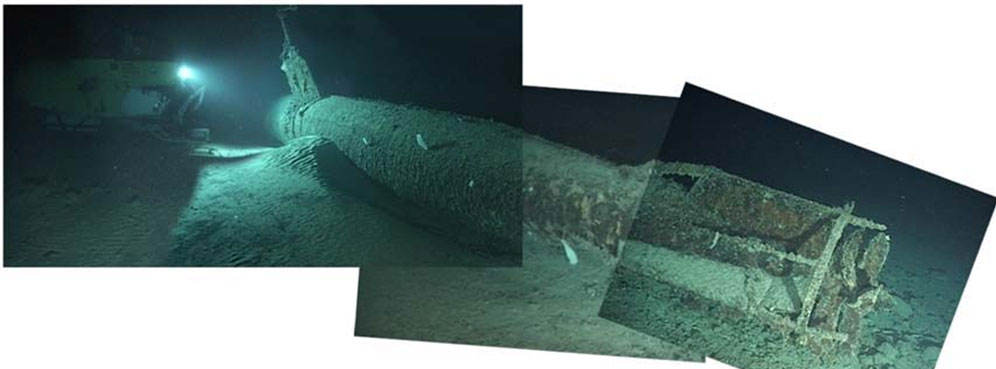Japanese Midget Submarine 2005 Expedition

In 2002, the Hawaii Undersea Research Laboratory (HURL) discovered the resting place of one of five Japanese midget-submarines launched from "I" class mother submarines on December 6th, 1941. These midget subs were sent to participate in the attack on Pearl Harbor the following day. The secret Japanese submarine remains as in situ physical evidence of one of the most critical events of United States and world history. Since its discovery, the site has become the focus of an evolving joint agency management effort (NOAA's Office of National Marine Sanctuaries, the Hawaii Undersea Research Lab, the National Park Service, and the Naval Historical Center). Preservation managers are interested in questions such as the stability and corrosion rate of the midget-sub, as well as developing best management practices for deep water maritime heritage sites. The midget-sub may be eligible for listing on the National Register of Historic Places as well as designation as a National Historic Landmark.
At 3:42 AM on December 7th, 1941, the U.S. minesweeper Condor spotted a submarine periscope outside Pearl Harbor. At 6:45 AM the destroyer USS Ward fired a shot from its 4 inch gun that appeared to hit the sub's conning tower. It also set off depth charges to prevent its entry into Pearl Harbor. At 6:53 AM, the USS Wardsent a report of its attack on the Japanese sub to Naval Command which unfortunately took little or no action before the aerial attack began at 8 am. At the Pearl Harbor investigation, some question was made of the accuracy of the Ward's report. The discovery of this Japanese midget submarine, however, confirms the reported sighting and actions of the USS Ward. Ironically, the USS Ward was subsequently sunk by a kamikaze attack exactly three years later on December 7th, 1944 in the Philippines.

There were five Japanese midget-submarines involved in the historic attack; the precise identity of this one remains unknown. The exterior of the wreck appears to be very well preserved after more than 60 years underwater. In September 2002, U.S. federal agencies involved with the site at that time agreed that scientific research on the wreck and its environment was necessary to determine the preferred alternative for long-term management of the wreck. In December 2003 an exterior corrosion study using methods similar to those used on the USS Arizona was initiated during a multi-agency (NOAA/NPS) visit to the site.
In 2005, scientists had the opportunity to revisit the Japanese midget-submarine in HURL's Pisces IV and V submersibles. On August 7th and 8th, representatives from NOAA's Office of National Marine Sanctuaries, the Hawaii Undersea Research Lab, the National Park Service, and the Naval Historical Center participated in a two day survey of the Japanese midget-sub. The research objective of the expedition focused on gathering baseline data for preservation management. This included hull surface corrosion measurements, estimating electron exchange at concretion surface with probes and voltage meter. Scientists also gathered environmental data with the deployment of a Seabird profiler for salinity, temperature, dissolved oxygen, pH, and oxygen reduction potential data at the midget-sub site for 24 hours.

In addition to these tasks, valuable digital imagery was collected from the site as scientists conducted a limited interior survey as well as high definition exterior documentation for a photo mosaic of the midget submarine and of the seafloor scouring underneath its hull (stability assessment). To accomplish the limited interior survey and assess the amount (and weight) of silt, a camera endoscope system was constructed with the support of the Office of Naval Research. Ultimately, survey data will be used to produce an FEM (Finite Element Model), allowing us to project site formation processes and discuss preservation alternatives.
The Japanese midget submarine is a war grave, and an important heritage asset that bears witness to the outbreak of WWII in the Pacific and major events that shaped the region and the world. The preservation of this site will allow future generations to remember, and to learn key elements of our maritime heritage. Minimizing the impact of our preservation efforts, and treating the site with all due dignity, honor, and respect, is of the highest priority.

